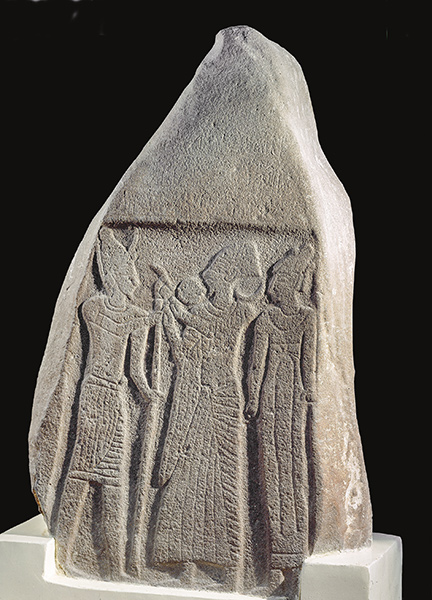Image Details

Erich Lessing/Art Resource, NY
BALUA‘ STELE. The Balua‘ Stele—usually dated to the later part of the Late Bronze Age (1400–1100 B.C.E.)—depicts three figures: a king or chieftain flanked by a god on the left and a goddess on the right. Both of the gods appear in Egyptian-style attire, while the central figure wears a Shasu headdress, an emblem typically used in Egyptian iconography to denote pastoral peoples from Transjordan. The god—possibly the Moabite god Chemosh—hands the central figure a scepter; this scene connotes the figure’s divine right to rule. Coming from the Iron Age site of Balua‘ in Jordan, the stele is about 6 feet tall and 3 feet wide and includes several lines of undeciphered writing.
